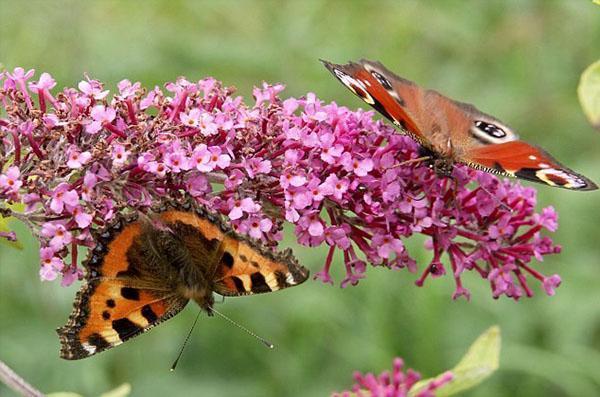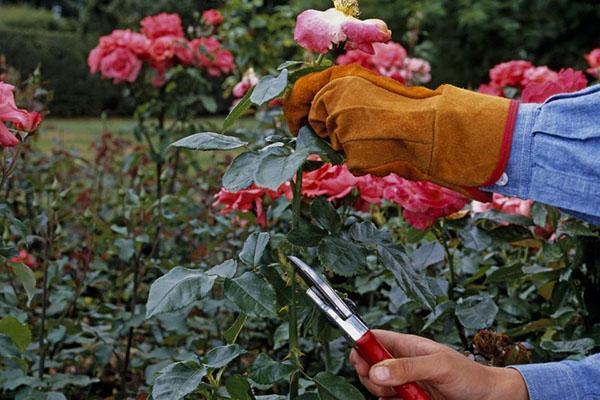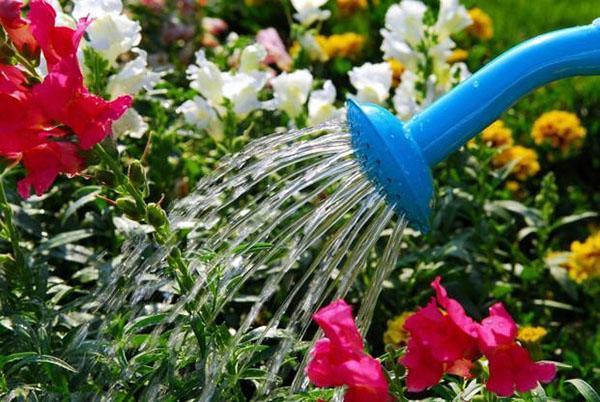Summer resident's calendar: work on flower beds in July
 July is the middle of summer and the peak of flowering of many ornamental crops. But behind each blossoming bud in a flower bed there is a lot of work of a summer resident. What's to be done in July? How to support your favorites and create a reserve for the future?
July is the middle of summer and the peak of flowering of many ornamental crops. But behind each blossoming bud in a flower bed there is a lot of work of a summer resident. What's to be done in July? How to support your favorites and create a reserve for the future?
The main tasks of the grower in July:
- weeding of flower beds;
- pruning wilted inflorescences on herbaceous perennials and shrubs;
- sowing perennials;
- watering and feeding flowering plants.
While the active growing season lasts, the plants need watering and feeding. Summer warmth awakens a variety of weeds to life, which in July will have to get rid of more than once, simultaneously loosening the soil under decorative shrubs, flowering perennials and flowers sown in spring.
It is impossible to delay weeding flower beds, ridges, curbs and mixborders, because rapidly rising weeds on fertilized and wet soil can give seeds and complicate work for the next year.
Pruning faded perennials and shrubs

You need to devote time to such work in flower beds with peonies, irises, lupines and cornflower. If you do not need to receive seeds, it is more correct to remove dried inflorescences of perennial cornflower, tops of mallow with formed capsules, flowering shoots of aquilegia. The peduncles that have lost their attractiveness are removed from the curtains daylilies, from perennial delphiniums and garden bells.
Plants spend a lot of energy during flowering. Regular watering combined with top dressing will help to replenish them.
Top dressing and watering of flowers in July flower beds
 In the second half of summer, phosphorus-potassium fertilizers are applied under the faded plants at the rate of 50-100 gsuperphosphate and half the amount of potassium sulfate per square meter every two weeks. The amount of fertilizer directly depends on the size of the plant and the intensity of its flowering.
In the second half of summer, phosphorus-potassium fertilizers are applied under the faded plants at the rate of 50-100 gsuperphosphate and half the amount of potassium sulfate per square meter every two weeks. The amount of fertilizer directly depends on the size of the plant and the intensity of its flowering.
 Why is it worth giving preference to formulations with potassium and phosphorus and limiting plants in nitrogen? Growth stimulating nitrogen in the second half of summer will cause the formation of young greenery and prevent perennials from preparing for winter. As a rule, plants that received a lot of nitrogen in July and August, winter worse and can freeze out even with mild frosts. Phosphorus and potassium, on the other hand, push the buds to start next year and help store nutrients.
Why is it worth giving preference to formulations with potassium and phosphorus and limiting plants in nitrogen? Growth stimulating nitrogen in the second half of summer will cause the formation of young greenery and prevent perennials from preparing for winter. As a rule, plants that received a lot of nitrogen in July and August, winter worse and can freeze out even with mild frosts. Phosphorus and potassium, on the other hand, push the buds to start next year and help store nutrients.
Granular fertilizers are applied in the grooves at least 10–20 cm from the roots. After moistening the grooves and adding granules, they are sprinkled with earth and the plant is watered abundantly again.
If the inhabitants of the flower bed in July and August are just going to bloom, for example, phlox, dahlias, rudbeckia, perennial asters, they are fed with nitrophos. And at the time of mass flowering, they switch to the introduction of potash-phosphorus mixtures.
 In some of the perennial crops that have completed flowering, not only flower stalks die off, but also the entire aboveground part. Such plants are fertilized until the greenery dies, after which the remnants of shoots and foliage are cut out, and the place in the flowerbed is mulched.
In some of the perennial crops that have completed flowering, not only flower stalks die off, but also the entire aboveground part. Such plants are fertilized until the greenery dies, after which the remnants of shoots and foliage are cut out, and the place in the flowerbed is mulched.
Perennials that leave before winter with live foliage and shoots are fertilized and watered in dry weather until autumn.
If there are landings on the site irises, in July, flower stalks are not only cut off from them, but the curtains are also checked for diseases. Leaves affected by fungi are trimmed to healthy tissue and treated with fungicides.
Loosening, weeding and mulching of flower beds
 After watering, especially on dense, heavy soil, a dense crust quickly forms, preventing the penetration of moisture and air to the roots. Therefore, in July, the soil in the flower beds is regularly loosened, simultaneously removing weeds and trying not to hurt the rhizomes of ornamental crops.
After watering, especially on dense, heavy soil, a dense crust quickly forms, preventing the penetration of moisture and air to the roots. Therefore, in July, the soil in the flower beds is regularly loosened, simultaneously removing weeds and trying not to hurt the rhizomes of ornamental crops.
Mulching with chopped straw or grass, peat or humus left after mowing the lawn will help save precious time in July.
Well-established weed control prevents the reproduction of aphids and other pests in flower beds and throughout the site.
Insect pest control in July
 Most often, these insects, giving several generations over the summer, are chosen by many meadow flowers and herbs, young willow shoots, reeds, bushes golden currant, thorny and cherry trees. If these plants are near flower beds, bedstraw, wild grasses, horse sorrel are removed, and trees and bushes are treated with insecticides.
Most often, these insects, giving several generations over the summer, are chosen by many meadow flowers and herbs, young willow shoots, reeds, bushes golden currant, thorny and cherry trees. If these plants are near flower beds, bedstraw, wild grasses, horse sorrel are removed, and trees and bushes are treated with insecticides.
Since many indoor plants are taken out into the garden in July, they also need to be protected from insects, as well as treated against fungal diseases. Flying weed seeds often end up in pots, so here the soil will have to be regularly inspected and uninvited guests removed.
In July, garden species of rose hips and roses form root shoots. To maintain the shape of the bush, and in roses and prevent the appearance of wild shoots, such stems are cut. Many ornamental shrubs can be cuttings in July for rooting and for obtaining autumn planting material.
 Taking care of the future beauty of flower beds, you can start sowing perennials in July. By the fall, the seedlings of Turkish carnations and delphiniums, catchments and stock roses, violets and pansies will have time to grow and get stronger. See the tire beds!
Taking care of the future beauty of flower beds, you can start sowing perennials in July. By the fall, the seedlings of Turkish carnations and delphiniums, catchments and stock roses, violets and pansies will have time to grow and get stronger. See the tire beds!